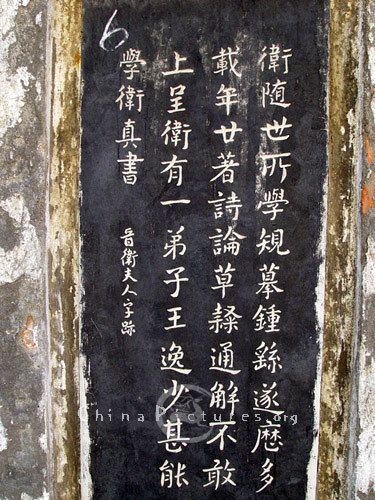Name Wei Shuo | Died 349 AD | |
 | ||
Wei Shuo (simplified Chinese: 卫铄; traditional Chinese: 衛鑠; pinyin: Wèi Shuò, 272–349), courtesy name Mouyi (茂猗), sobriquet He'nan (和南), commonly addressed just as Lady Wei (衛夫人), was a Chinese calligrapher of Eastern Jin, who established consequential rules about the regular script. Her famous disciple was Wang Xizhi.
Contents

Biography
Born in modern Xia, Shanxi, Wei was the daughter of Wei Zhan (衛展) or the daughter or younger sister of Wei Heng (衛恆). Wei was married to Li Ju (李矩), the Governor of Ding Prefecture. Wei and Li had Li Chong (李充), also a calligrapher and a Palace Secretarial Attendant (中書侍郎). She was a student of Zhong Yao. However, Wei's style is narrower than Zhong's wider style. Wei's The Picture of Ink Brush (筆陣圖) describes the Seven Powers (七勢) that later became the famous Eight Principles of Yong.
Works
Wei's other works include:
